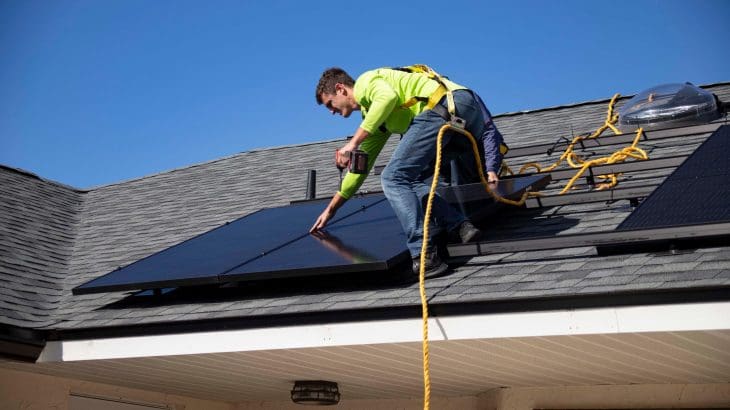The Caribbean region is on the brink of a substantial infrastructure overhaul. The pandemic significantly impacted the region’s infrastructure development plans and saw a shift in focus towards shoring up healthcare and social support systems. However, the focus has now returned to long-term infrastructure projects, and private sector investment is seen as crucial for success.
Against this backdrop, and in advance of the 8th Caribbean Infrastructure Forum (CARIF 2024), New Energy Events convened four leading voices in the infrastructure space to discuss what’s working well, what not so well, and how we need to be planning for the future of infrastructure investment in the Caribbean.
Setting the tone for the conversation which followed, Daniel Best, Senior Infrastructure and Development Advisor of the Office of the Prime Minister of Barbados, asserted that, “We need to put the focus back on infrastructure investment in a very real and telling way.”
#1. Tourism has come back strongly post-pandemic
Of the Caribbean’s mainstay sector, tourism, the trend is growth.
Gillian Charles-Gollop, Executive Director, Corporate Banking and Sustainable Finance at CIBC Caribbean: “Everyone in the region knows that tourism has bounced back and has exceeded expectations in a number of territories.”
The Caribbean is now seeing some big ticket “chunky” projects across the region.
#2. The next generation of energy infrastructure
The need for clean, resilient energy is a major driver for infrastructure investment in the region. The Caribbean is now seeing some big projects come online, most notably in the Dominican Republic.
Therese Turner-Jones, Acting Vice President of Operations at the Caribbean Development Bank: “Renewable energy as a sector is where we’re galvanizing our minds around how do we get this to roll out more consistently across the region.”
We need to accelerate the pace, though. The recent high temperatures across the region, and the stress it’s causing unmodernized electric grids, are throwing this need into sharp relief.
But: there’s lots of opportunity. If we can get the regulation right – and it won’t be easy – capital will flow to this sector.
#3. Water: a “major” source of concern
Water scarcity is another critical issue facing the Caribbean islands. We need investment in existing infrastructure – water loss is a huge problem – but we also need to figure out new sources of water and how best to deliver that resource to our communities. Is there an opportunity to invest in state-of-the-art wastewater treatment plants that can make good water out of bad? Time is running out: we need to move quickly to identify solutions.
#4. Transport & logistics, a long-term need
Another critical area of development for the region, we’re seeing some significant projects in this space, notably – as far as ports are concerned – in Jamaica and the Bahamas. Roads, many of which are massively congested across the Caribbean, are also a priority.
Sam Story, Head of Infrastructure and Government at the KPMG Islands Group: “We are island nations. We rely so heavily on our airports and ports.” Effective long-term planning is needed to make sure we secure the investment we need. The Caribbean has to get this right.
#5. Affordable housing rarely in the headlines, but essential
A lot of families across the Caribbean are suffering at the hands of inflation and also feeling the impact of the widening wealth disparity gap. Governments need to do more to plan for affordable housing.
#6. Digital infrastructure: backbone of a modern economy
Digital infrastructure is critical to the Caribbean’s development. This includes reliable broadband access, cybersecurity measures, and government investment in e-services. Estonia was cited as a model. Simply put, investing in digital infrastructure is crucial for regional economic development and global competitiveness..
Daniel Best: “I think we appreciate, at a deep level, that the development of our region will be anchored in digital infrastructure.”
#7. The need to channel private sector investment into infrastructure
The public sector can’t do this alone. On the upside, the region holds a lot of potential for investors. We have to put our public sector to one side and seek private sector solutions. The strength of national balance sheets of most governments of the countries in the region just isn’t there.
Therese: “We’re trying to move the needle on getting public sector investment in infrastructure beyond 3-5% of GDP which is where in most countries it is stuck. It’s a challenge because of fiscal constraints. So this is where partnerships come in.”
#8. Highly favorable market for financing
Gillian: “The market for financing in the region is very favorable.” Highly liquid commercial banks are looking for projects. Also, the development banks are out there with a mandate to lend and invest. That, combined with other sources of available capital translates into a robust environment to get deals done. What do we need? Bankable, viable projects that are climate-proofed and that will stand the test of time.
PPPs – as a means to bridge the gap between public sector resources and the hefty financial requirements of large-scale infrastructure projects – are still seen as valuable instruments but are under-deployed.
#9. Infrastructure investment can’t lag
Many jurisdictions have been focused on population, economic and tourism growth but investment in infrastructure needs to go hand-in-hand with that growth. Otherwise you’re like that kid, says Sam Story of KPMG, who’s running downhill and reaches a point where he realizes his legs can’t keep up with his speed. “The backbone, the infrastructure we need to support that growth, hasn’t kept pace”.
#10. Why national development plans are critical
KPMG’s Sam Story emphasized the dangers of the 3-5 year election cycle and the focus that often emerges on short-term wins and low-hanging fruit. National development plans, which transcend short-term politics, can mitigate that cycle. But they must be living documents which don’t gather dust. Story suggested that there were 7-8 national development plans which had been approved across the Caribbean but which had fallen by the wayside. We need to buck that trend: if we want to execute big ticket, long-range infra projects, we need to stand by hard and fast, long range development plans.
2024 Caribbean Infrastructure Forum (CARIF), September 24-25, Miami
The discussion served as a stage-setter to CARIF, a forum dedicated to Caribbean infrastructure development. The forum aims to bring together the entire market – all the key stakeholders – to discuss these critical issues, develop world-class solutions, and move the region forward.


